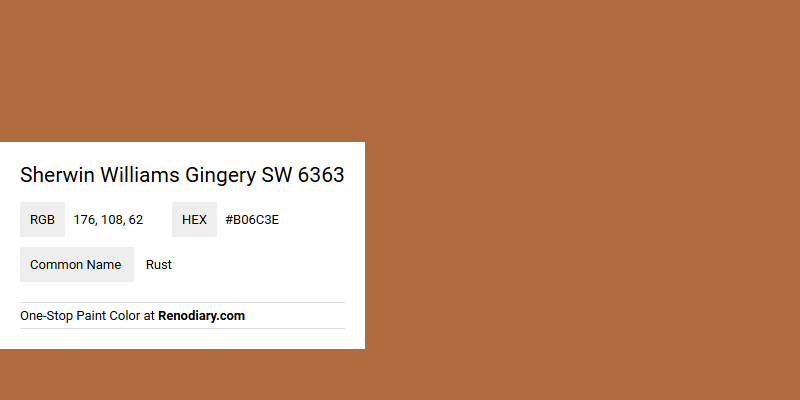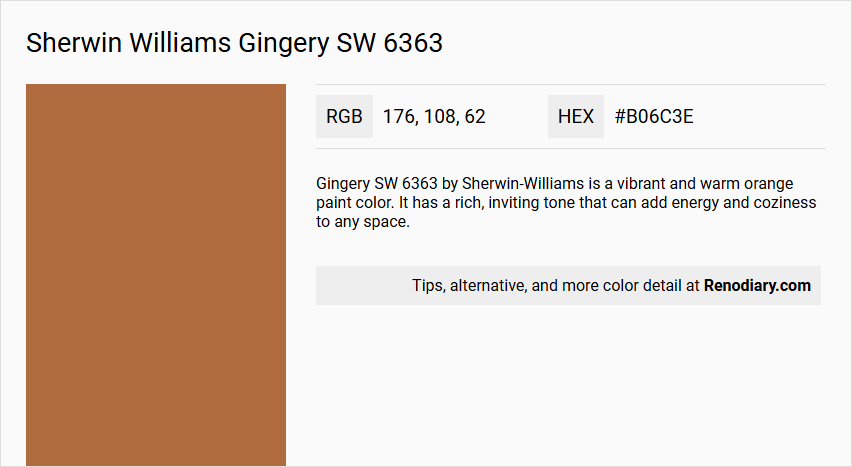
Sherwin Williams' Gingery SW 6363, characterized by its warm hue, is often associated with the rich and earthy tones of rust. With an RGB composition of 176, 108, and 62, this color brings a sense of grounded warmth and inviting coziness to any space. Perfect for both accent walls and complementary decor, Gingery exemplifies the harmonious balance between boldness and subtlety.
Color Description
Gingery SW 6363 by Sherwin-Williams is a vibrant and warm orange paint color. It has a rich, inviting tone that can add energy and coziness to any space.
Undertones
The color has undertones of yellow and a slight brown hue, which gives it a deeper and more complex appearance compared to a pure orange.
Color Values
- Red: 175
- Green: 112
- Blue: 57
Usage
This color is suitable for both interior and exterior paint projects. It can be used to create a bold and lively atmosphere in living rooms, kitchens, or any area where a warm and energetic feel is desired.
Atmosphere
Gingery SW 6363 creates a warm, inviting, and energetic atmosphere. It can evoke feelings of comfort and vitality, making it ideal for spaces where you want to stimulate conversation and activity. The color can also add a sense of coziness and warmth, especially when paired with complementary colors like neutrals or deep woods.
Sherwin Williams Gingery SW 6363 Color Alternative
Sherwin Williams Gingery SW 6363 offers a warm and inviting hue that inspires a variety of complementary alternatives. Designers have identified Sherwin Williams Copper Mountain SW 6356, Sherwin Williams Butterscotch SW 6377, and Sherwin Williams Husky Orange SW 6636 as attractive substitutes that provide similar energy and versatility in design projects. Each of these options maintains a unique character while preserving the inviting essence found in Sherwin Williams Gingery SW 6363.
Bathroom
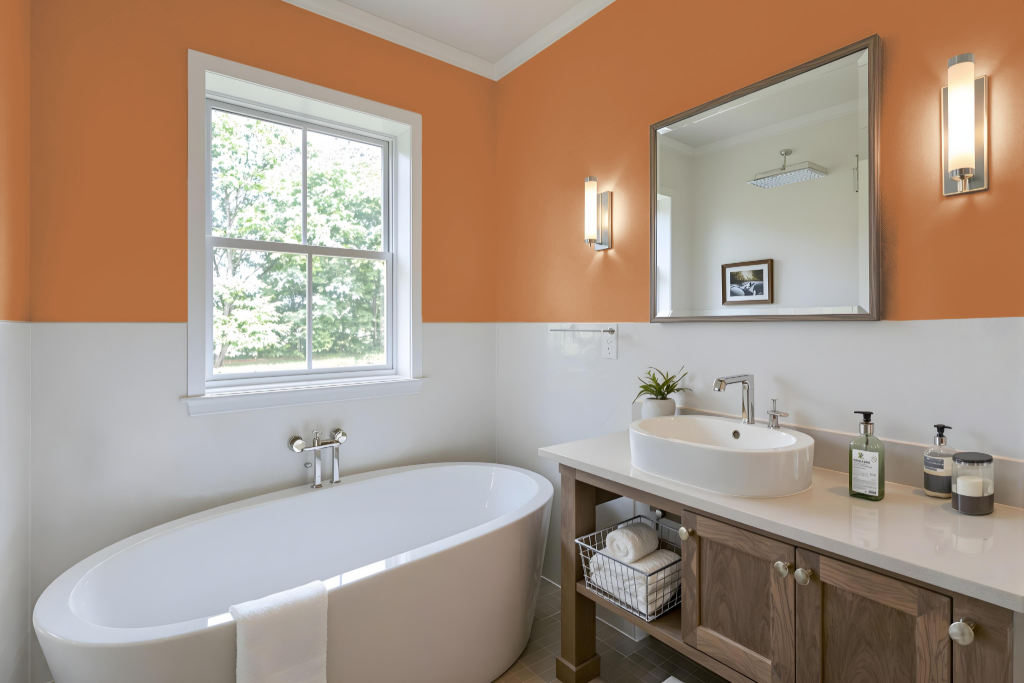
For a bathroom, Sherwin Williams Gingery SW 6363 brings a warm, medium-dark tone that creates an intimate and cozy atmosphere rather than a bright and airy one. This distinctive hue sets the stage for a unique design experience, where pairing it with lighter accents, such as using a bright color on the ceiling and trims, can help create a balanced, welcoming space.
To counteract the naturally enclosed feel that comes with a lower light-reflectance value, the design can benefit from maximizing natural light and incorporating reflective surfaces. Thoughtful planning of the overall design, including strategic lighting and accent choices, ensures that the inviting character of Gingery is highlighted while maintaining an open and inviting feel in the bathroom.
Bedroom
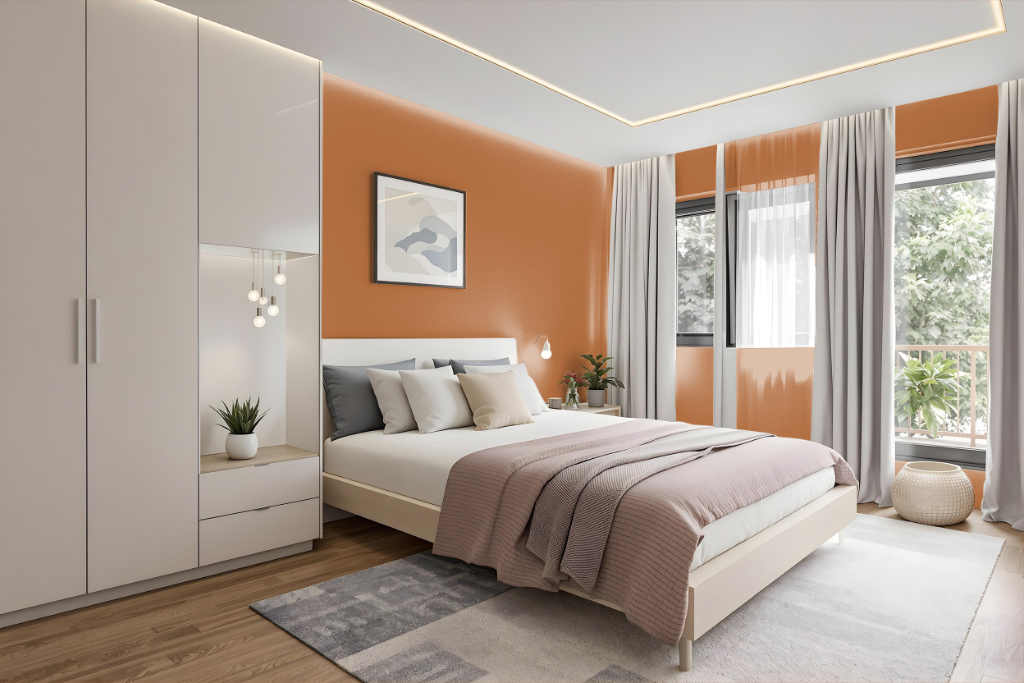
Sherwin Williams Gingery SW 6363 is an excellent bedroom color choice that creates a warm and inviting atmosphere. It harmonizes with soft neutrals such as Accessible Beige and Peppercorn, making it ideal for walls while lighter shades enhance trim and furniture to craft a balanced setting.
For a timeless look, consider incorporating accents like Online to enrich the overall palette. Adding complementary greens can provide subtle contrast, allowing both the warm base and its paired tones to shine in a cohesive and calming environment.
Kitchen
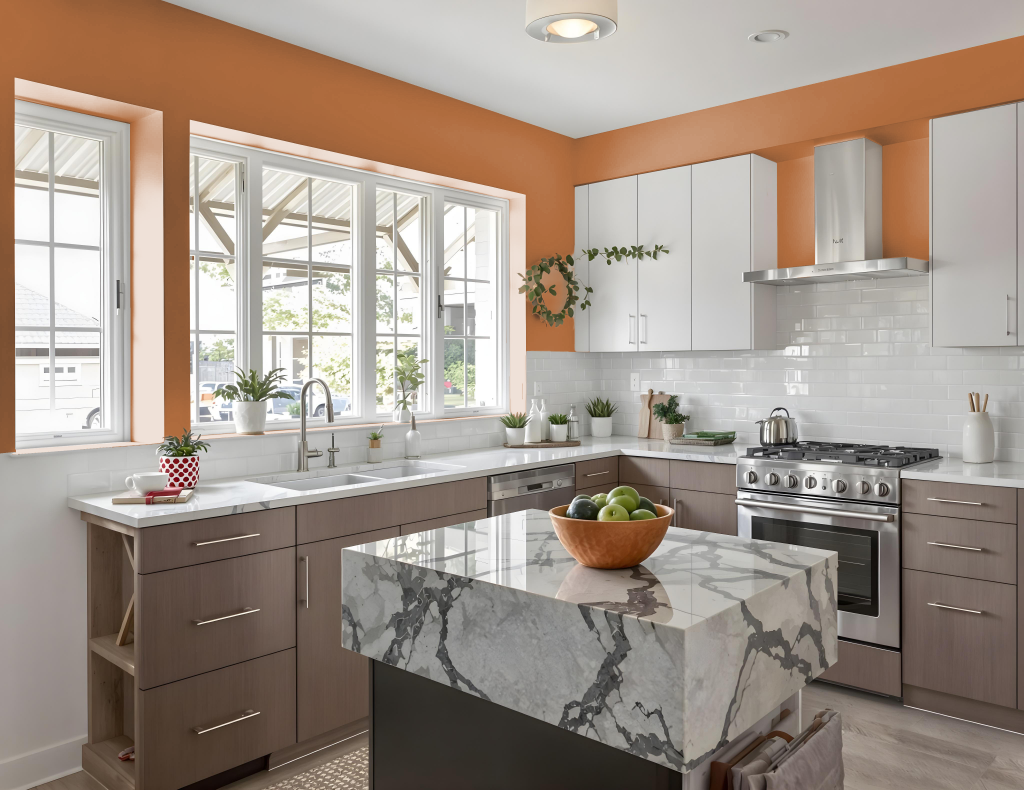
For a kitchen color scheme, Sherwin-Williams Gingery SW 6363 brings a warm and inviting atmosphere that sets the stage for a beautifully balanced space. It pairs seamlessly with soft neutrals like Accessible Beige and Peppercorn along with refined accent tones from Online, resulting in an engaging palette that offers both depth and harmony.
Enhancing the kitchen further, natural textures such as jute or rattan and the addition of dark wood accents amplify the organic feel. Botanical-themed accessories or carefully placed house plants contribute to an earthy ambiance that underscores the overall inspiration of the design.
Living Room
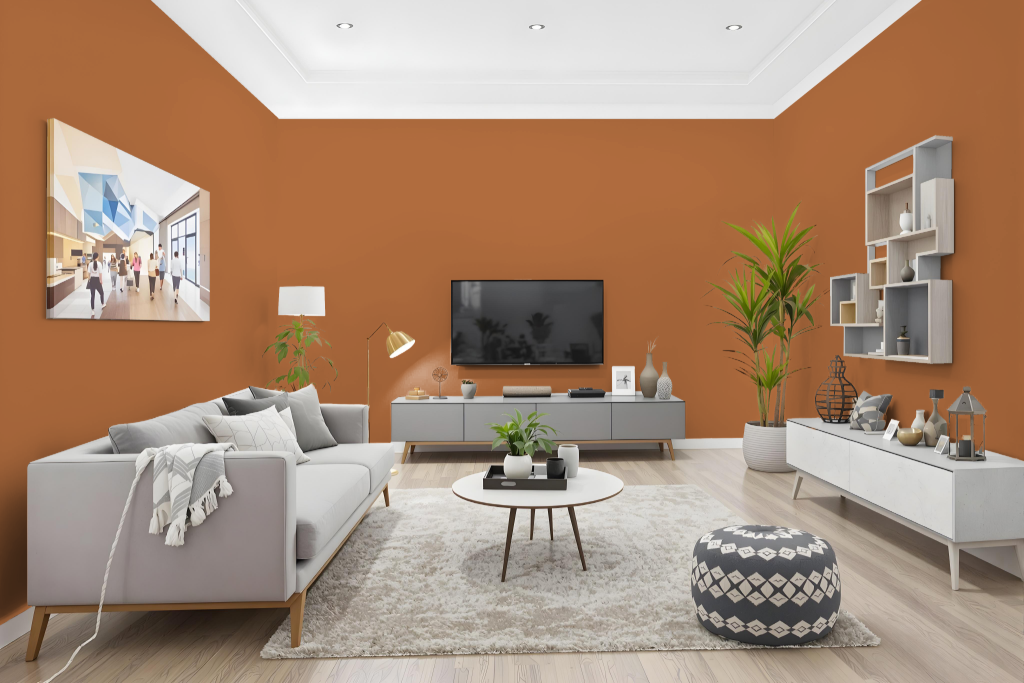
In a living room, Sherwin Williams Gingery SW 6363 establishes warmth and sophistication through its medium-dark tone that creates a cozy, inviting atmosphere. Its deep hue lends itself well to pairing with soft, neutral complements such as Accessible Beige and Peppercorn, ensuring a balanced and enriched space.
This thoughtful color choice offers flexibility in design schemes—whether composing a monochromatic, analogous, or triadic palette—and can be further enhanced with strategic accent colors to introduce dynamic contrast. The overall effect is a timeless yet contemporary ambiance that elevates the living room's character.
Outdoor
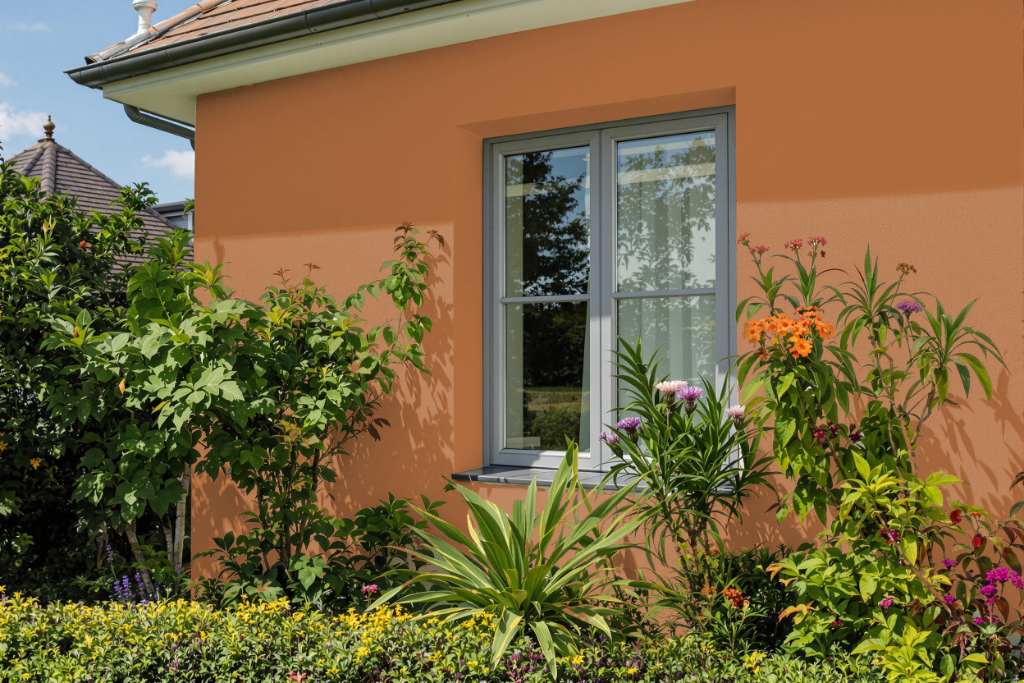
Home outdoor color Gingery SW 6363 from Sherwin Williams brings a medium dark tone that enhances the outdoor ambiance with a warm and inviting feel. Belonging to the Enriched Earth collection and part of the Orange family, this hue can infuse a home’s exterior with character, especially when paired with softer neutrals that lighten the overall impression.
Due to its light-reflectance qualities, Gingery absorbs more light, leading to a more intimate and subdued atmosphere in areas with limited natural illumination. To prevent the space from feeling too enclosed, complementing this color with lighter accents or textures can create a balanced and engaging outdoor environment.
